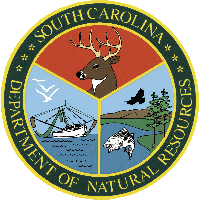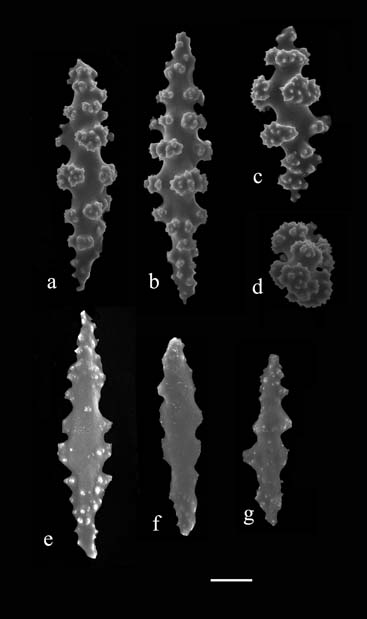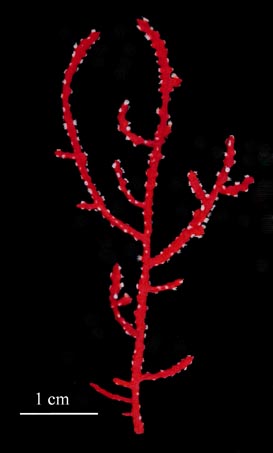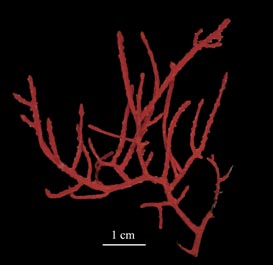CONTENTS
Introduction
The South Atlantic Bight
Methods
Octocoral Morphology
Glossary
Gorgonacean
Bauplan
see this for keys
Notes on the Species
Carijoa
riisei
Scleranthelia
rugosa
Telesto fruticulosa
Telesto nelleae
Telesto sanguinea
Bellonella rubistella
Pseudodrifa nigra
Nidalia occidentalis
Iciligorgia schrammi
Diodogorgia
nodulifera
Titanideum
frauenfeldii
Muricea pendula
Thesea nivea
Bebryce cinerea
Bebryce parastellata
Scleracis guadalupensis
Paramuricea sp.
Leptogorgia hebes
Leptogorgia punicea
Leptogorgia
cardinalis
Leptogorgia virgulata
Leptogorgia setacea
Leptogorgia euryale
Viminella
barbadensis
Renilla reniformis
Sclerobelemnon
theseus
Stylatula elegans
Virgularia presbytes
| Guide
to the Shallow Water (0-200 m) Octocorals of the South Atlantic
Bight.
S. T. DeVictor
& S. L. Morton, 2007
Leptogorgia punicea
(Milne Edwards & Haime), 1857 Remarks. Colonies of L. punicea
display open pinnate branching and prominent calyces which are in
double rows on two sides of the branches. The examined specimen
is in fragments but probably had a total height of less than 10
cm, and the branches are 1 mm wide exclusive of calyces. The sclerites
consist of acute spindles, blunt capstans and flat, scalloped anthocodial
rods. The spindles and flattened rods reach 0.12 mm in length and
are roughly four times longer than wide and the blunt capstans are
slightly shorter. The spindles and capstans are reddish orange with
pink anthocodial rods. The color of the colony is generally purple
or reddish purple. Atlantic distribution: North Carolina, 62-105
m; Georgia, 20 m; Gulf of Mexico, 23 m; southern Florida, 27-73
m; Venezuela to Brazil, 1-69 m (Bayer, 1961; NMNH collection; SERTC
collection).
|
|
 |


